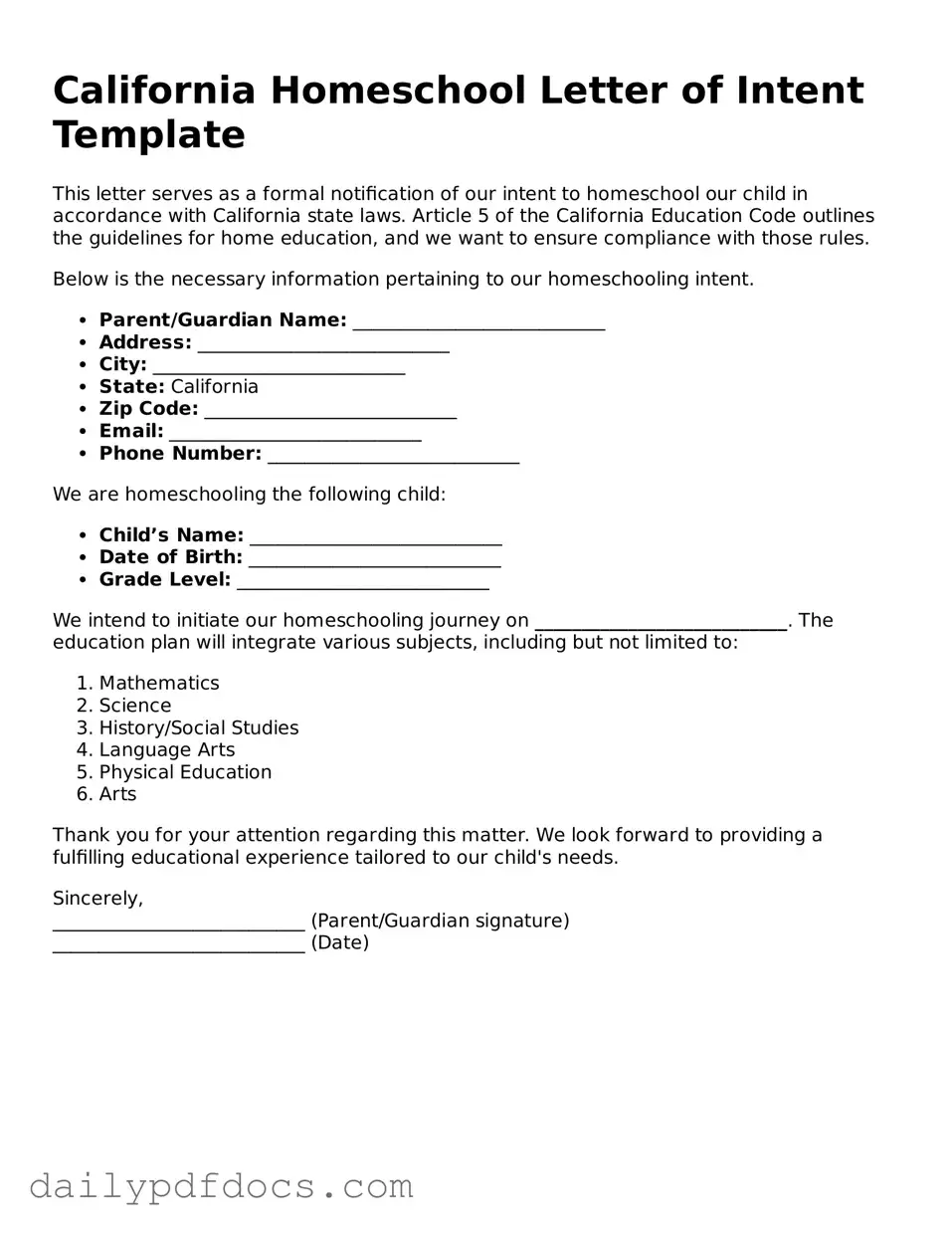California Homeschool Letter of Intent Template
This letter serves as a formal notification of our intent to homeschool our child in accordance with California state laws. Article 5 of the California Education Code outlines the guidelines for home education, and we want to ensure compliance with those rules.
Below is the necessary information pertaining to our homeschooling intent.
- Parent/Guardian Name: ___________________________
- Address: ___________________________
- City: ___________________________
- State: California
- Zip Code: ___________________________
- Email: ___________________________
- Phone Number: ___________________________
We are homeschooling the following child:
- Child’s Name: ___________________________
- Date of Birth: ___________________________
- Grade Level: ___________________________
We intend to initiate our homeschooling journey on ___________________________. The education plan will integrate various subjects, including but not limited to:
- Mathematics
- Science
- History/Social Studies
- Language Arts
- Physical Education
- Arts
Thank you for your attention regarding this matter. We look forward to providing a fulfilling educational experience tailored to our child's needs.
Sincerely,
___________________________ (Parent/Guardian signature)
___________________________ (Date)
